
Amber is fossilized tree resin, which has been appreciated for its color and natural beauty since Neolithic times. Much valued from antiquity to the present as a gemstone, amber is made into a variety of decorative objects. Amber is used in jewelry. It has also been used as a healing agent in folk medicine.

Stoddard is a town in Cheshire County, New Hampshire, United States. The population was 1,232 at the 2010 census.

Pale ale is an ale made with predominantly pale malt.

A color gel or color filter, also known as lighting gel or simply gel, is a transparent colored material that is used in theater, event production, photography, videography and cinematography to color light and for color correction. Modern gels are thin sheets of polycarbonate or polyester, placed in front of a lighting fixture in the path of the beam.

A safelight is a light source suitable for use in a photographic darkroom. It provides illumination only from parts of the visible spectrum to which the photographic material in use is nearly, or completely, insensitive.
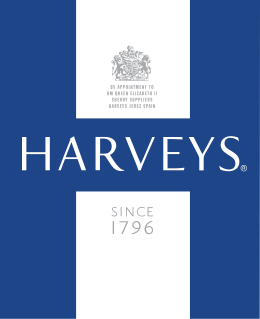
John Harvey & Sons is a brand of a wine and sherry blending and merchant business started by John Harvey in Bristol, England in 1796. The business within 60 years had blended the first dessert sherry dubbed 'cream' which has changed little since 1880 and is known as Harveys Bristol Cream. The brand was sold to Beam Global in 2010 and to Grupo Emperador Spain S.A. in 2015.

Beer is a major part of German culture. German beer is brewed according to the Reinheitsgebot, which permits only water, hops, and malt as ingredients and stipulates that beers not exclusively using barley-malt such as wheat beer must be top-fermented.

Carnival glass is moulded or pressed glass, always with a pattern and always with a shiny, metallic, 'iridescent' surface shimmer.

Depression glass is clear or colored translucent machine made glassware that was distributed free, or at low cost, in the United States and Canada around the time of the Great Depression.

A blue rose is a flower of the genus Rosa that presents blue-to-violet pigmentation instead of the more common red, white, or yellow. Blue roses are often used to symbolise secret or unattainable love. However, because of genetic limitations, they do not exist in nature. In 2004, researchers used genetic modification to create roses that contain the blue pigment delphinidin.

A Mason jar, named after John Landis Mason who first invented and patented it in 1858, is a molded glass jar used in home canning to preserve food. The jar's mouth has a screw thread on its outer perimeter to accept a metal ring. The band, when screwed down, presses a separate stamped tin-plated steel disc-shaped lid against the jar's rim. An integral rubber ring on the underside of the lid creates a hermetic seal. The bands and lids usually come with new jars, but they are also sold separately. While the bands are reusable, the lids are intended for single use when canning. Largely supplanted by other products and methods for commercial canning, such as tin cans and plastic containers, glass jars and metal lids are still commonly used in home canning.
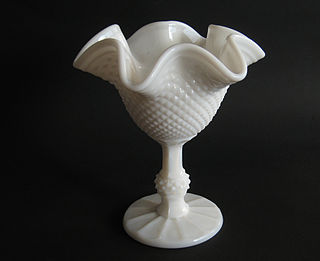
Milk glass is an opaque or translucent, milk white or colored glass that can be blown or pressed into a wide variety of shapes. First made in Venice in the 16th century, colors include blue, pink, yellow, brown, black, and the white that led to its popular name.
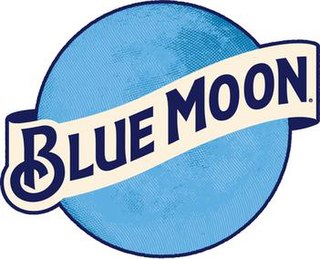
Blue Moon Belgian White is a Belgian-style witbier brewed by MillerCoors under the name the Blue Moon Brewing Co. It was launched in 1995, and was originally brewed in Golden, Colorado.

Corelle Brands, LLC is an American kitchenware products maker and distributor based in Rosemont, Illinois.

Sea glass and beach glass are similar but come from two different types of water. "Sea glass" is physically and chemically weathered glass found on beaches along bodies of salt water. These weathering processes produce natural frosted glass. "Genuine sea glass" can be collected as a hobby and is used for decoration, most commonly in jewelry. "Beach glass" comes from fresh water and in most cases has a different pH balance and a less frosted appearance than sea glass. Sea glass takes 20 to 40 years, and sometimes as much as 100 years, to acquire its characteristic texture and shape. Sometimes also colloquially referred to as "Drift glass" from the longshore drift process that forms the smooth edges. In practice, the two terms are used interchangeably.
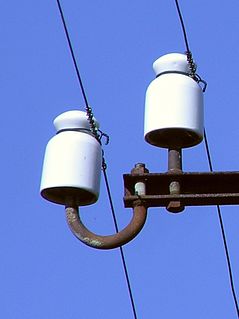
A pin insulator is a device that isolates a wire from a physical support such as a pin on a telegraph or utility pole. It is a formed, single layer shape that is made out of a non-conducting material, usually porcelain or glass. It is thought to be the earliest developed overhead insulator and is still popularly used in power networks up to 33 KV. Single or multiple pin insulators can be used on one physical support, however, the number of insulators used depends upon the application's voltage.
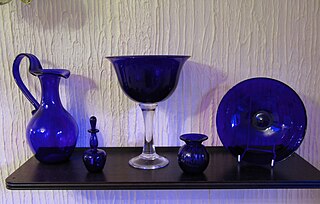
Bristol blue glass has been made in Bristol, England, since the 18th century, with a break between the 1920s and 1980s.
Glass coloring and color marking may be obtained by 1) addition of coloring ions, by 2) precipitation of nanometer sized colloides, 3) by colored inclusions, 4) by light scattering, 5) by dichroic coatings, or 6) by colored coatings.
Duncan & Miller Glass Company was a well-known glass manufacturing company in Washington, Pennsylvania. Items that were produced by the company are known as "Duncan glass" or "Duncan Miller glass." The company was founded in 1865 by George Duncan with his two sons and son-in-law in the South Side neighborhood of Pittsburgh, Pennsylvania. By 1890, the company joined other glass companies to form the United States Glass Company, a powerful glass trust. In 1892, the factory was destroyed in a fire, and the company was relieved of its trust relationship with the US Glass Company. After the fire, the second generation of the Duncan family moved operations to Washington, Pennsylvania. In 1900, John Ernest Miller, the company's long-time designer, became a full shareholder along with members of the Duncan family. By 1955, economic pressures from machine-produced glass forced the company to sell off its assets to the US Glass Company, who continued to produce Duncan-style glass until 1980.

The Amber Coast is the name given to a coastal strip of the Baltic Sea in the northwest of Kaliningrad. In this area amber has been excavated since the mid-19th century and up to today in open-pit mining. Two deposits – Palmnikenskoe and Primorskoe, containing 80% of world amber reserves, were found near Yantarny on the Western coast of the Sambia Peninsula in 1948-1951’s.






















